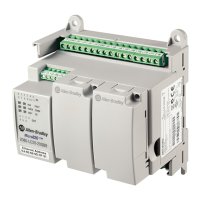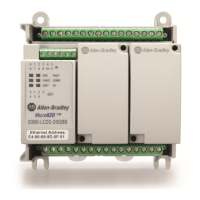Rockwell Automation Publication PFLEX-AT001L-EN-P - September 2017 7
Chapter 1
Understanding How Dynamic Braking Works
How Dynamic Braking Works
When an induction motor’s rotor turns slower than the synchronous speed set by
the drive’s output power, the motor is transforming electrical energy obtained
from the drive into mechanical energy available at the drive shaft of the motor.
This process is referred to as motoring. When the rotor is turning faster than the
synchronous speed set by the drive’s output power, the motor is transforming
mechanical energy available at the drive shaft of the motor into electrical energy
that can be transferred back to the drive. This process is referred to as
regeneration.
Most AC PWM drives convert AC power from the fixed frequency utility grid
into DC power by means of a diode rectifier bridge or controlled SCR bridge
before it is inverted into variable frequency AC power. Diode and SCR bridges
are cost-effective, but can only handle power in the motoring direction.
Therefore, if the motor is regenerating, the bridge cannot conduct the necessary
negative DC current, the DC bus voltage increases and causes an overvoltage
fault at the drive. More complex bridge configurations use SCRs or transistors
that can transform DC regenerative electrical power into fixed frequency utility
electrical energy. This process is known as line regeneration.
A more cost-effective solution can be provided by allowing the drive to feed the
regenerated electrical power to a resistor which transforms it into thermal energy.
This process is referred to as dynamic braking.

